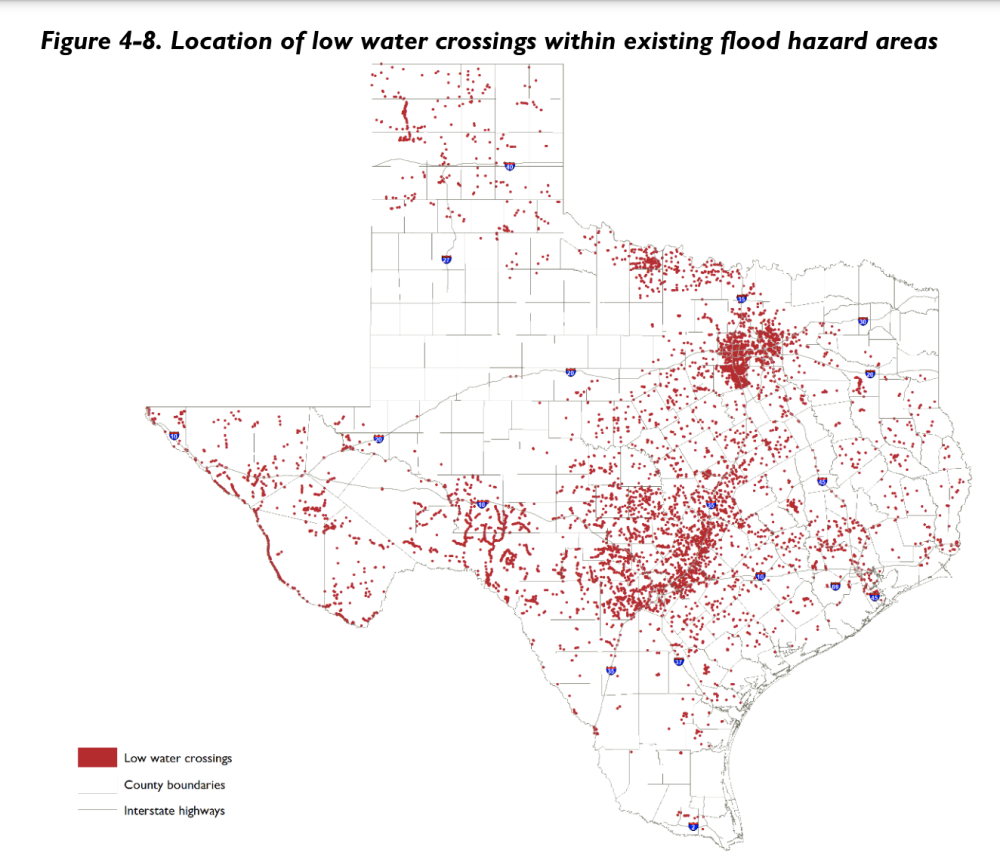State lawmakers tasked the Texas Water Development Board with creating the plan in 2019, in the aftermath of Hurricane Harvey. The 267-page draft, published in early May, recommends over $54.5 billion in funding to reduce flood risks.
The board discussed the plan during a May 30 public hearing in Austin. Texans have until June 17 to submit feedback online.
“We want to put out a state flood plan that does what it is tasked to do, and that is to save lives and save property,” TWDB chair Brook Paup said during the hearing.
What you need to know
The plan includes findings from 15 regional flood planning groups, which have been working since October 2020, and makes several recommendations for state and local flood policies.
Nearly 1.3 million homes and over 12 million acres of agricultural land are in flood-prone areas, the plan estimates.
“Although flooding has certain benefits, like recharging groundwater and providing vital nutrients to ecosystems and agricultural lands, it remains a significant threat to the health and safety of Texans,” the plan reads. “Each of the state’s 254 counties has experienced at least one federally declared flood disaster, proof that floods can affect all areas of Texas.”
The plan noted that roughly 70% of flood-related deaths occur on roadways, particularly during the night and at low-water crossings. The planning groups identified nearly 64,000 miles of roads in areas susceptible to flooding.

What they’re saying
Four Texans spoke during the public hearing. They expressed concerns about climate change and how it could increase the risk of future flooding.
“We would recommend that as part of this first plan or incorporation into future plans, the Texas Water Development Board provide best management practices and guidance to local entities on how to incorporate climate change into their modeling,” said Cyrus Reed, the conservation director of the Lone Star Sierra Club. “We think the plan before you may not incorporate the best science and the wide variety of expected increases in flooding events and sea level rise that we're likely to see along the coast.”
The draft plan mentions the word “climate” 10 times but does not directly reference climate change.
Reed told Community Impact he hoped the board would prioritize “nature-based projects,” such as preserving land and restoring river habitats.
“Our particular interest is really making sure that nature-based projects ... are really a main focus of this plan because that prevents the need for doing really, really expensive stuff,” Reed said. “And some of that really, really expensive structural stuff can actually worsen flooding downstream.”
Rebecca Edwards, a climate action fellow for Texas Impact, an interfaith public policy organization, urged the board to provide more information about the increasing risk of flash flooding as heavy rainfall increases in Texas.
“Extreme precipitation [is] projected to increase in a warming climate, especially in the eastern half of the state, which is something that we've seen over many times this spring alone and certainly over the last five years. ... My organization represents people of faith in Texas, and so we're interested in people having an environment where they're safe and able to thrive,” Edwards said. “So including knowledge about the way climate change is increasing the risk of extreme precipitation and flash flooding is important for building codes and things that make it so people can be safe in their homes.”
The state climatologist at Texas A&M University recently forecast that heavy rain will become more common as temperatures increase. Flooding is expected to increase in urban areas as rainfall becomes more severe, while river flooding will stay roughly the same, according to the climatologist’s report.
What’s next?
The TWDB is expected to approve a final version of the flood plan in August and submit it to the Legislature by Sept. 1. Under state law, the plan must be updated every five years.





